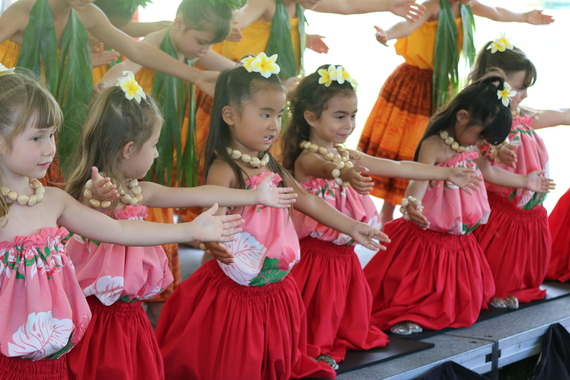The annual Design for Dance conference series draws together experts and advocates in the world of dance to discuss the crucial role of dance in well-being. This year's topic is Dance @ Work, dealing with ways dance can enhance work environments and the lives of people working. 
The conference series is the brain child of BJ Fogg, head of Stanford's Persuasive Technologies Lab, and it takes place at or near Stanford each year. How does this relate to Hawai'i? I'm glad you asked, because this is a great story.
BJ Fogg does one thing better than just about anyone else, and that is figuring out how to get people to behave in a predictable way and feel good about doing it. He makes serious bank working in industry designing technologies to get consumers to do things predictably, like clicking a Travelocity link. It sounds scary, but Fogg really is all about using his powers for good, which is what brought him to TEDxMaui last year.
In 2013, Fogg spoke at TEDxFremont about something he called Tiny Habits. Behavior is never successfully changed if you go for big, dramatic shifts, which is why New Year's resolutions rarely work. Old habits are broken and new ones formed by taking baby steps, what cognitive psych calls behavioral modeling. Fogg has led nearly 30,000 people through his Tiny Habits process where in a few days, they make three small but meaningful changes of habit. Thirty thousand people.
"I have 420 people signed up for this next week," Fogg said last fall. "And not all of them will have breakthroughs, but the majority of them will be able to change their life."
Fogg's TEDxMaui talk described a Tiny Habit he has dubbed "The Maui Habit," where upon awakening, when your feet hit first the floor, you say "today's going to be a great day." You program yourself to approach the day positively, and that tiny shift allows magic to happen. Life's lemons can turn to lemonade, but it takes an open attitude to remember to squeeze them and add sugar.
Magic brings us to dance, which Fogg loves. He founded Design for Dance knowing that dance also works wonders.
"In 2013, BJ was looking at the numbers associated with Zumba, which are like 19 million users a week," explains Robin Zander, director of Design for Dance. "What's particularly significant about Zumba is that it's a gateway drug of sorts to other forms of physical activity. People go for this dance class, the cardio workout in a gym, and what it provides is a welcoming community for people who are not otherwise in a gym setting. And they begin to adopt other fitness activities."
This is classic Fogg; the easiest way to get people to do things is to work with things they want to do and/or do already. The Maui Habit works because your feet have to hit the floor each morning, and that provides a predictable moment to shift your mental frame. Zumba, he noticed, provides a baby-steps point of embarkation to healthier activities.
"Everyone around the world loves to dance, if you define it broadly," Zander continues. "Babies dance, people dance at parties, and BJ founded Design for Dance in 2013 to look at whether there is a dialog people are interested in having around dance, behavior change, and health."
This year's topic of Dance @ Work, draws on the trend at many major corporations to get employees up and moving during the day to improve their health.
"Kaiser Permanente has a program they call instant recess," Zander describes. "As a part of employee's days, they turn on the gym music and dance or they play dodge ball in the corridors during the break. And it's wildly popular. "
Conference speaker Anna Bothelo was hired to help provide exercise programs for Google at the company's home campus, and dance was included.
"What she found, looking at the numbers," Zander relates, "was the same as what BJ found with Zumba, that people coming to her dance classes were not otherwise engaged in physical activities. She was able to demonstrate to Google the value of dance for the health of their employees, and Google has built several dance studios on their campus as a result."
Other speakers are similarly accomplished and interesting. John Michael Schert started out as a dancer with the American Ballet Theater. He is now at the Chicago Booth School of Business as a visiting scholar looking at the under-utilization of artists in the workplace and the value they can provide to the work environment. Amy Cueva runs the very successful design firm Mad*Pow, and is also a professional level belly dancer who will talk about how dance forms a major part of her full and well-rounded life.
Here, we find the message for Hawai'i from Design for Dance. These islands are filled with dance of every group who reached these shores, from hula to ethnic dances of Korea, Okinawa, Greece, and the Philippines. The best and brightest young people are often the ones in a halau or some sort of dance class, whether ethnic, ballet, tango, or tap.
Hawai'i is also home to high rates of obesity and diabetes, and to tragically high rates of depression and suicide, especially among young people. At the same time, Hawaii brims with cultural resources that can reverse the trend, if we simply recognize and support them.
- Dance is a physical activity. Activity helps prevent weight gain and subsequent diabetes. Further, simply moving around improves emotional state and reduces depression.
- Halau, dance groups, and classes provide people with a sense of social connectedness to those they dance with, and a person's network of social connections is the biggest predictor of mental and physical health.
- As a young person learns dance, he or she also learns what is termed self-efficacy, the sense of being able to do and achieve, which in turn combats depression.
- Ethnic dance forms convey much more than simply movements. Hula tells stories of history and identity in every movement, and that gives the young people who learn it a clearer sense of identity. It also gives the kumu who pass it on a real sense of meaning and purpose in their lives.
Design for Dance 2015, Thursday, May 7, 2015, 8:30 AM to 4:00 PM (PDT)
First Baptist Church, 305 N California Ave, Palo Alto, CA 94301
$124 Students, $269 General
Contact: robin@robinpzander.com (415) 938-6683

